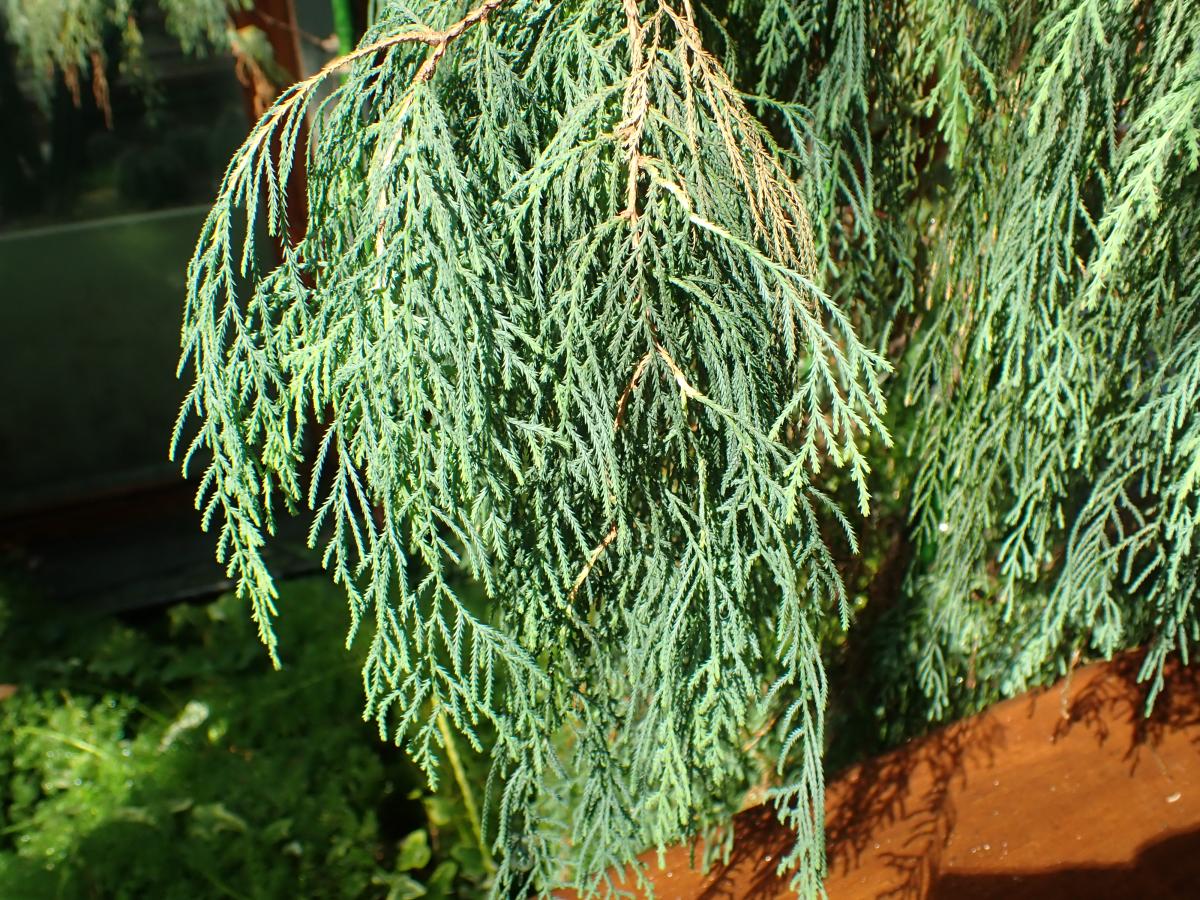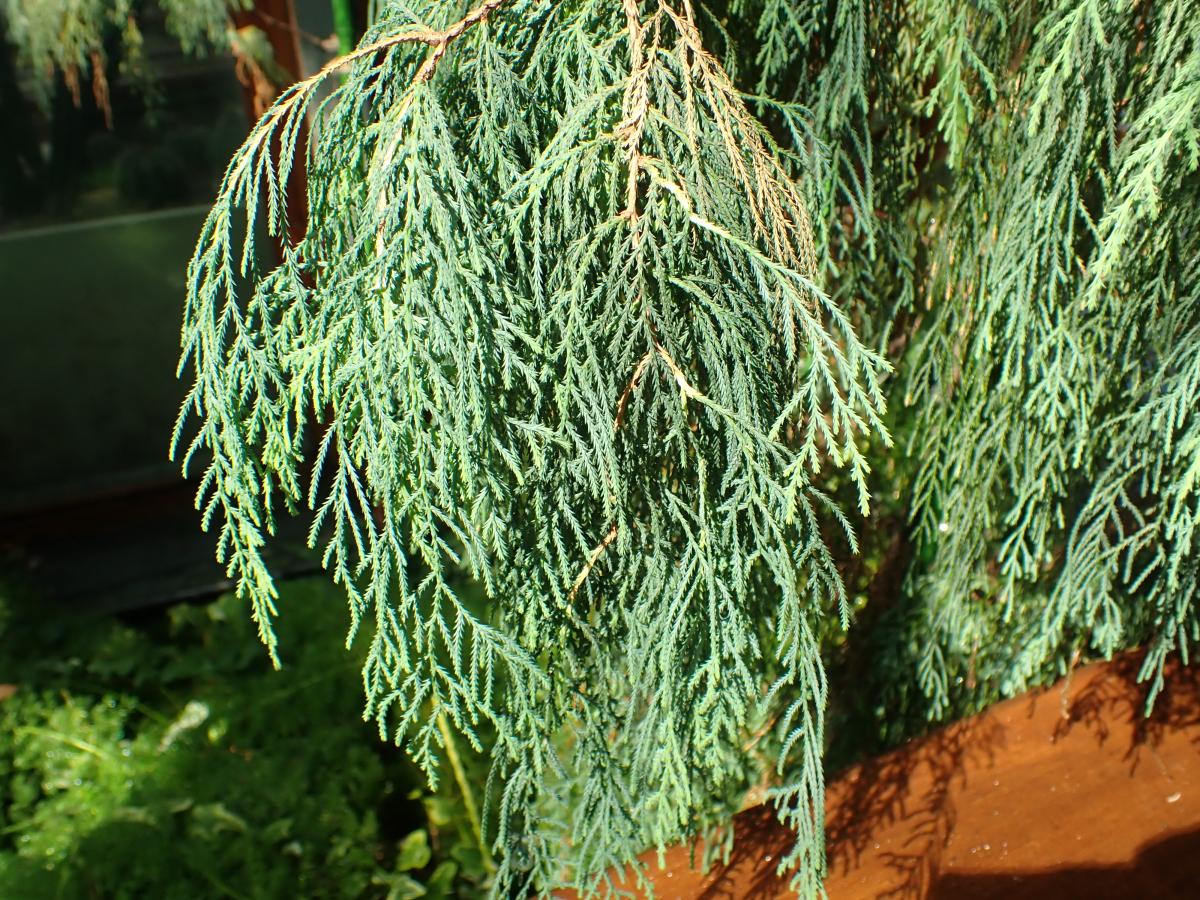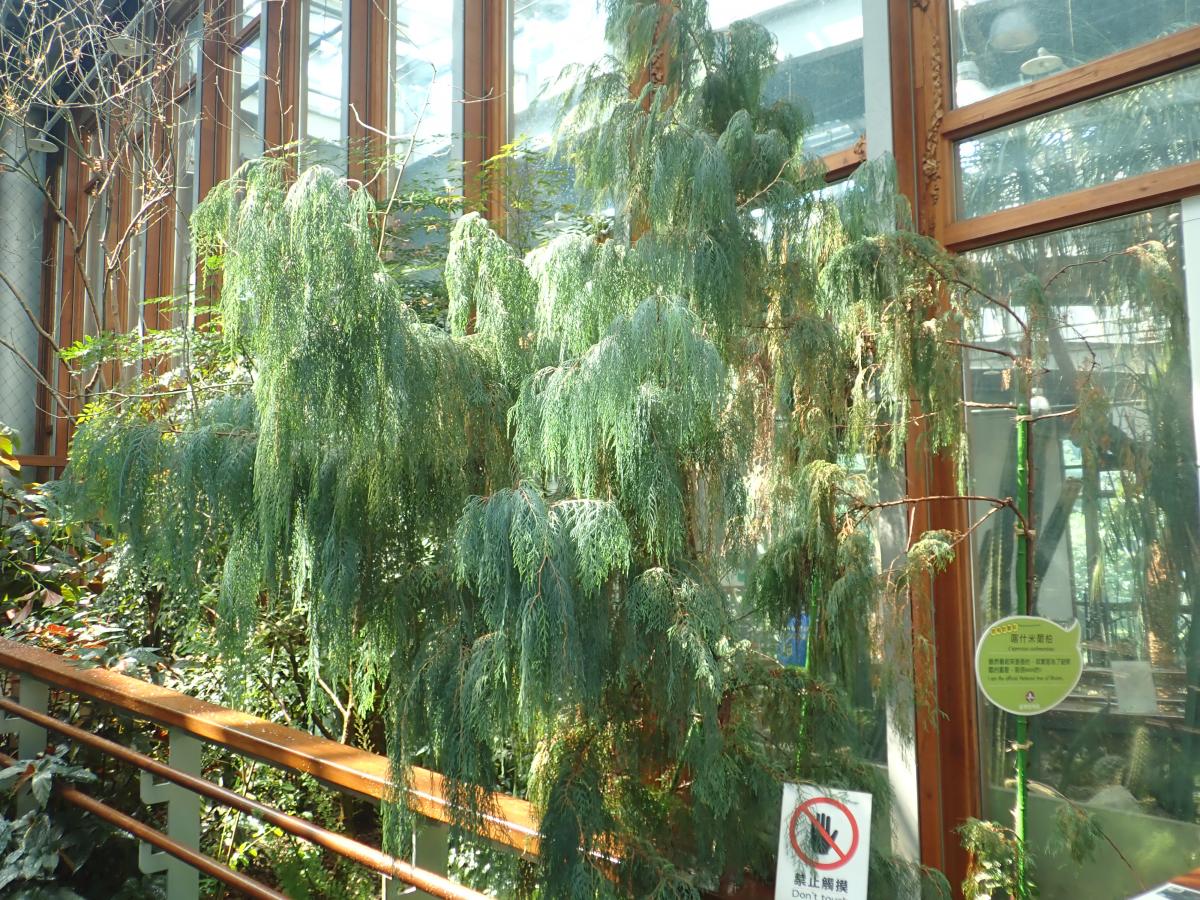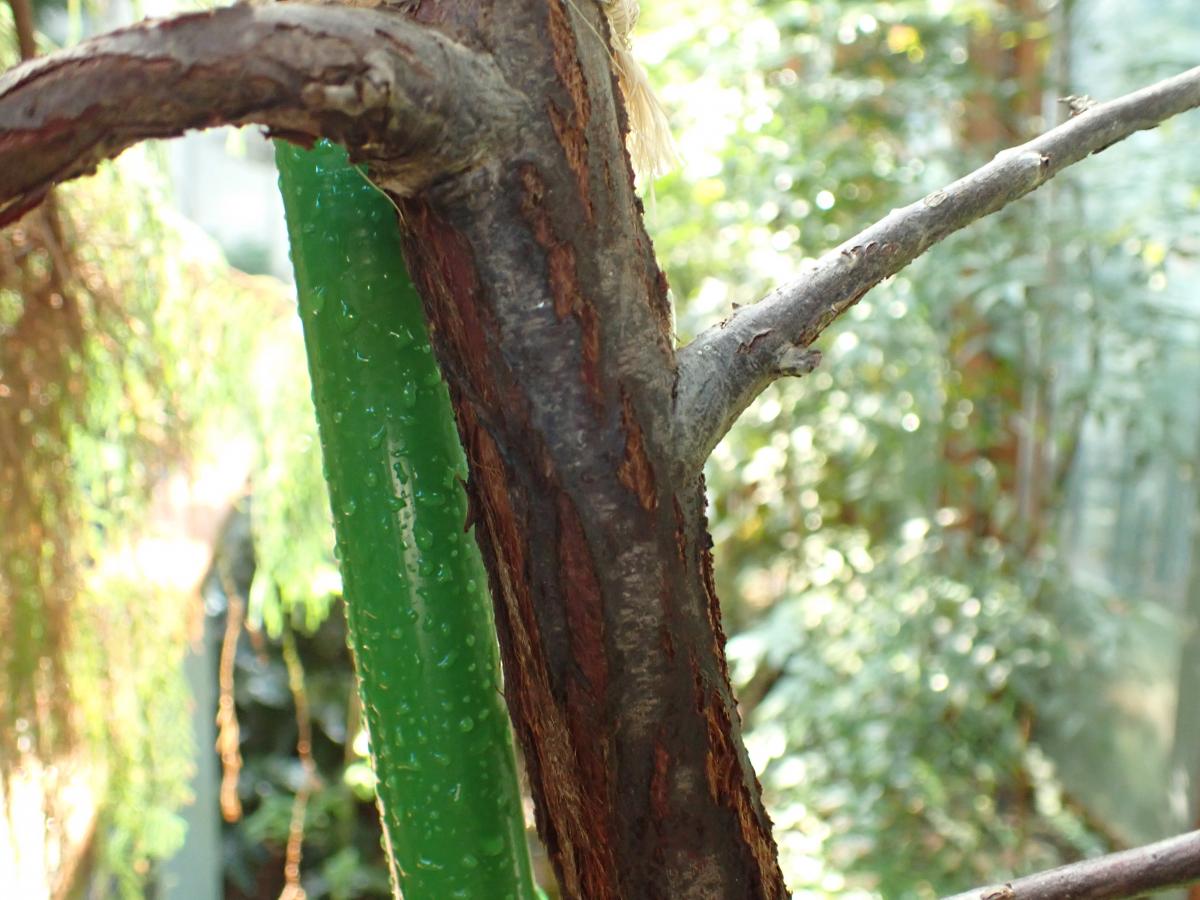柏科
學名:Cupressus cashmeriana Royle ex Carr.
英名:Kashmir Cypress
別名:藏柏
原產喜馬拉雅山區南麓,從喀什米爾到不丹都有分佈,是不丹的國樹,常種植在佛教寺院旁。樹冠尖塔形,藍灰色細枝垂曳,樹形柔美別緻,是極佳的景觀樹。枝條看起來弱不禁風,其實是一種抵消樹枝上積雪重量的策略,因為枝條細軟,葉片更演化成細鱗片狀到幾乎看不見,積雪稍微大些就會滑落,如此就不容易壓斷枝條。
Kashmir Cypress is native to the southern foothills of the Himalayas and distributed from Kashmir to Bhutan, it is the national tree of Bhutan and commonly planted close to Buddhist monasteries. With pinnacle-shaped tree crown, blue-gray twigs hanging down, the tree poses a soft and unique shape and is valued as an excellent landscape tree. The branches look weak and windy, but it is actually a strategy to offset the weight of accumulated snow on the branches. As the branches are soft, the leaves have evolved into thin scales almost invisible to allow snow easily slide off when accumulating to a certain weight to prevent the branches from being crushed.
柏木屬常綠喬木,原產中亞至喜瑪拉雅山區。樹冠尖塔形,生長極為緩慢。樹幹分岐低矮,樹枝及小枝多下垂;葉簇生下垂,尤以小枝為然。葉扁平狀,針形葉細小銳尖,粉藍色,偶有黃綠色,被白粉。雌雄同株,毬花,單生枝頂;雄毬花長橢圓形,黃色。毬果圓形,熟時黑褐色,果鱗10枚。每一果鱗內有種子10枚;種子小,有翅。
An evergreen tree in the genus Cupressus, native from Central Asia to the Himalayas. The extremely slow-growing species has a spiry canopy. Trunk low-branched, with mostly drooping branches and twigs; leaves drooping in clusters, particularly those on the twigs. Leaves flat, needles small and apex acute, powder blue, occasionally yellow-green, and covered white powder. Monoecious, strobili, solitary and apical; male strobili oblong and yellow. Cones round, dark brown when ripe, bearing 10 fruit scales each containing 10 seeds; seeds small and winged.
性喜冷涼,耐高溫。在臺灣高冷地生育良好,平地氣溫較高則生長較差。種子或扦插繁殖。
The tree prefers cold climate but can tolerate high temperature. It grows better in alpine regions than in warm lowlands. Propagated by seeds or cuttings.
樹形優美可作庭園景觀樹。木材供建築。是不丹的國樹,在喜瑪拉雅山區通常種植在佛教寺院內。
Valued for the elegant tree shape, the plant is commonly planted as a garden ornamental tree. The wood could be used for construction. It’s the national tree of Bhutan, commonly planted in Buddhist monasteries in the Himalayas.




